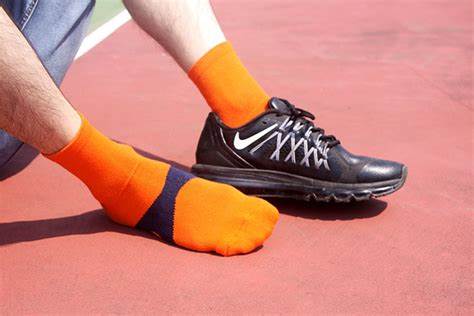In sports with elements of walking and running, like athletics, marathon, or basketball, the feet are the ones that suffer most. Cramps, the feeling of tension, muscle inflammation, and many other injuries happen to athletes all the time. And if they don’t treat these conditions, they can’t provide top results.

One of the popular solutions to these problems is athletic compression socks, which have a preventive and therapeutic effect. You can wear them to reduce the risk of blood clots, leg swelling, and venous thrombosis. These socks are made of materials that adapt to the foot while providing compression and wearing comfort at the same time.
Fast Circulation
Blood is the fluid of life because it transports all the vital nutrients necessary for humans to live and function. When you are exposed to efforts, your body needs more energy. When they train hard or compete, athletes have to provide extra ‘fuel’ to their bodies.
Muscles need oxygen to perform their functions. The greater need for this element means that it needs to reach the muscle tissue faster. As it transfers by blood, faster circulation will get it to the goal faster. That’s why athletes should wear compression socks whenever they train, play matches, or compete.
Compression socks press veins and make them narrower. That action speeds up the circulation of fluid through them. In this way, the arterial blood flow is improved, which contributes to a longer-lasting muscular effect. At the same time, targeted compression speeds up the return of venous blood and relieves the feeling of weakness in legs.
No Muscle Cramps
The feeling of aching legs occurs due to lactic acid that accumulates on muscles. These deposits cause inflammation in the places where they settle, which leads to the contraction of muscle tissue.
The best way to treat spasms is to use some kind of pressure to speed up blood flow and prevent fluids from spilling into the surrounding tissues. On this page, find out how. Wearing compression stockings will boost circulation and break down lactic acid deposits.
Reduction of Swelling
The original purpose of compression socks was to reduce leg swelling. Today, modern technologies are used in the production of these sports aids to improve their performance. Makers of these aids use materials that distribute the compression along the legs. These are tight but lightweight to prevent and allowing the skin to breathe.
In athletes, swelling of the legs happens as a result of an injury. Edema usually occurs in the area of the calves or ankles. The swelling itself is not problematic, but it’s painful and prevents healing of the injury. Get rid of excess fluid by wearing compression stockings. Use them to speed up blood flow and prevent fluids from spilling into the surrounding tissues.
Improved Thermoregulation
Proper blood circulation allows the body to warm up and keep an optimal temperature. Blood flow issues are usually first noticed on the feet, which are cold despite being always on the move. Besides, unpleasant cramps and tingling are more common.
Good blood flow through the body allows the activation of thermoreceptors. These are in charge of maintaining a constant temperature. Compression socks provide optimal thermoregulation for faster tissue recovery. That’s crucial in wound healing and inflammation reduction. Also, these aids prevent injuries that interfere with athletes providing superior performance.
Provide Stability

As you run or jump, the vibrations that occur when your foot touches the ground are transmitted at lightning speed through your legs. You may not feel it, but these shakes can move ligaments and joints. They won’t cause instant damage but may have inevitable consequences in the future.
Tips on preventing running injuries check on the following source:
https://www.verywellfit.com/how-to-prevent-running-injuries-2911348
Reducing vibration in lean tissues reduces the possibility of muscle injuries and pain. You will achieve this if you wear athletic compression socks, but only those made to measure. Every athlete has different anatomy of the legs. In order to provide compression in the right places, these aids should be custom-made.
Both professional and recreational athletes face injuries almost every day. Caution when doing these activities is necessary, but the right sports equipment and aids, including athletic compression socks, provide the best prevention.